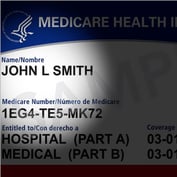Last week, Covered California announced that the tentative, average renewal increase for individual plans sold through the state-based public exchange will be 4.2 percent in 2015.
This is great news for enrollees and employers. While the announced increase is not for employer-based plans, the early indicators are that we’ll also see lower-than-expected renewals in the employer insurance market. The same market forces that shaped the individual rates will similarly impact group plans, albeit, not as directly as they shaped the exchange plans. After about a decade and a half of renewals that were two to three times as high as the consumer price index, hearing about a 4.2 percent average increase provides long-awaited relief for the battered and the weary.
Clearly, everybody wants to know if this moderation in rate increases is due to the Patient Protection and Affordable Care Act (PPACA or “Obamacare”) and whether it will last. In short, yes, this is certainly at least partially a result of PPACA. And no, this will not be the new normal in health insurance renewals.
1. The three R’s (“bailout”) programs.
First and foremost, we must not forget that PPACA exchange plans have a safety net mechanism built into them. The “three R’s programs” (risk adjustment, reinsurance and risk corridors, which are also referred to as the built-in “bailouts”) are designed to channel taxpayer and profitable insurer money to insurers that lose money on exchange plans. Without getting too deep into the weeds, basically, an insurer will get back 50 percent to 80 percent of the dollars it loses on its exchange population during 2014, 2015 and 2016. The program terminates on its own after 2016.
This three R’s programs are funded, in part, by a transitional reinsurance tax we are all paying in our insurance plans. As news of the programs finally made its way out into the mainstream in the late fall of 2013, political pressure mounted to revisit the propriety of such a program. On the heels of the bank bailouts and the mortgage crisis, the last thing a politician wants to do is defend taxpayer funds earmarked for insurers. That buzz startled insurers and the administration. Neither the insurers nor the administration can afford a repeal or congressional interference with the three R’s programs. PPACA supporters downplayed the bailouts as a necessary, planned, and prudent way to smooth out what could be a rate shock when we add millions of uninsured and, presumably, less healthy people to our commercial health insurance risk pools through the new PPACA ban on linking health coverage prices to personal health information other than age and tobacco use. Insurers want to quietly receive these funds while calling as little attention to the topic as possible.
See also: PPACA: CCIIO Fears Risk Adjustment Bugs and PPACA: Minimum MLR Talks Turn to Reinsurance
The first bailout statistics are in, and, as Investor’s Business Daily reports, “taxpayers [are] on the hook for as much as $1 billion in bailout money through the law’s ‘risk corridor’ program, thanks largely to the administration’s unilateral decision to expand it. Twelve out of the 15 insurance companies that provided information to [Congress] expect to get ‘risk corridor’ checks from the government to cover their losses this year. Just one expects to pay into the ‘budget neutral’ program.”








 August 05, 2014 at 04:00 AM
August 05, 2014 at 04:00 AM










